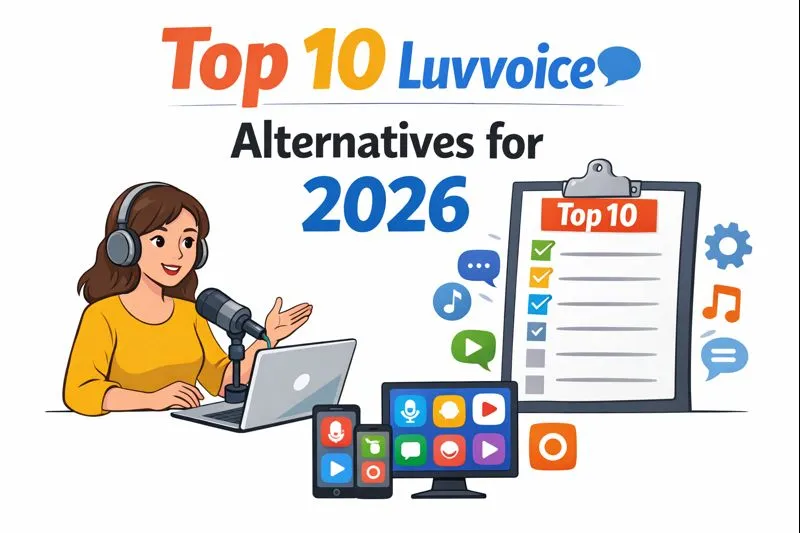How Synthetic Voices Enhance Brand Consistency in Business Phone Systems

In business, every touchpoint tells a story. Logos, websites, and ad campaigns often get the spotlight, but the voice customers hear when they call matters just as much. For decades, business phone systems relied on static recordings or outsourced voice talent. While these solutions worked, they often created inconsistencies—different tones, varying quality, and uneven experiences.
Today, synthetic voices are changing the game. Powered by AI, they bring clarity, consistency, and control to phone communication. More than just technology, synthetic voices have become a strategic tool for strengthening brand identity.
Why Phone Systems Shape Brand Identity
When customers call a company, the first impression often comes from sound. The voice that greets them sets the tone for the entire interaction. If it’s clear, professional, and aligned with the company’s values, it builds trust. If it feels outdated or mismatched, it can send the wrong message.
This is why business phone systems are more than operational tools. They’re an extension of branding. Synthetic voices give organizations the power to align their phone communication with the same consistency they expect from their visual and written identity.
The Evolution of Business Phone Systems

From Efficiency to Experience
Traditional phone systems were designed for efficiency—routing calls, reducing labor, and cutting costs. Recordings were often done quickly, with little thought to how they reflected the brand.
Over time, customer experience became a competitive edge. Businesses realized callers weren’t just looking for answers; they were forming opinions about the company. That realization shifted the role of phone systems from utility to brand platform.
Synthetic Voices Enter the Scene
Early synthetic voices were robotic and impersonal. Today’s versions, built with natural language processing and AI, sound strikingly human. More importantly, they can be customized to reflect brand personality—calm and empathetic, upbeat and friendly, or steady and authoritative.
This evolution ensures that companies no longer have to compromise between efficiency and brand expression.
Comparing Business Phone Systems: Traditional vs. Synthetic

It helps to compare business phone systems across eras to see how far they’ve come.
Traditional Systems:
Relied on human voice recordings.
Updates were time-consuming and costly.
Inconsistencies were common when multiple voice actors were used.
Modern Systems with Synthetic Voices:
Instantly generate updates in the same consistent voice.
Scale seamlessly across locations and departments.
Align perfectly with brand identity while reducing costs.
The difference is clear: synthetic voices turn what was once a static, fragmented tool into a dynamic, brand-aligned experience.
The Cost Advantage of Synthetic Voices
Brand consistency isn’t just about image—it’s about practicality. Hiring professional voice talent, booking studio time, and re-recording every update is expensive. Even small changes, like adding a new department, could require weeks of turnaround.
Synthetic voices eliminate these costs. Once set up, companies can generate new prompts instantly in the same style. This makes professional-level consistency accessible not only to large corporations but also to small and mid-sized businesses that want to sound polished without breaking budgets.
Emotional intonation and accents can also be customized to fit the brand's tone and personality, ensuring a seamless customer experience across all touchpoints. Additionally, synthetic voices can be easily updated and scaled as needed, allowing businesses to adapt quickly to changing market demands without incurring additional costs.
Why Consistency Builds Customer Trust
Studies in communication show that tone of voice affects trust and credibility. A fragmented or overly robotic voice can create doubt, while a clear and consistent tone reassures callers that the company is reliable.
Think of a healthcare provider that uses a calm, empathetic voice—it reduces patient anxiety before they even speak to an agent. Or a financial firm using a steady, confident voice—it reinforces security and dependability.
Synthetic voices allow these nuances to be controlled with precision, ensuring every interaction reflects the brand’s promise.
Making Phone Systems Accessible and Inclusive

Accessibility is no longer optional; it’s a requirement. Synthetic voices make phone systems more inclusive by offering:
Adjustable clarity and speed for different listener needs.
Multilingual options with the same consistent brand voice.
Clearer, more natural pronunciation across accents.
This ensures that businesses can serve wider, more diverse audiences without sacrificing consistency.
Adaptability in a Fast-Changing Business World
Markets shift quickly. Regulations change. Emergencies happen. During these moments, the ability to update phone systems instantly is critical. Synthetic voices make this possible without compromising brand tone.
For example, a company facing a sudden policy change can update all its phone prompts overnight—keeping the same trusted voice callers recognize. That adaptability turns the phone system into a flexible, resilient tool instead of a static barrier.
The global market for branding agency services was valued at USD 4.9 billion in 2022, and it is projected to expand at a compound annual growth rate (CAGR) of 5.8% between 2023 and 2030, according to Cognitive Market Research. This growth is driven by the increasing importance of maintaining brand consistency across all customer touchpoints, including phone systems. As companies strive to enhance customer experience and stay competitive, investing in branding agency services for phone systems will become increasingly essential.
AI-Powered Personalization
Synthetic voices are powered by AI, and that means they can go beyond simple recordings. Businesses can now:
Create custom voices unique to their brand, ensuring no competitor sounds the same.
Adjust tone dynamically depending on the context—formal for billing, relaxed for customer support—while still keeping consistency.
Scale globally with multilingual support in one unified brand voice.
This personalization turns synthetic voices into more than a tool—they become a distinct part of a brand’s identity. AI-powered personalization enhances emotional control and brand recognition, allowing businesses to connect with customers on a deeper level.
Ethical Considerations: Transparency and Trust
One concern with synthetic voices is authenticity. Customers should never feel tricked into believing they’re speaking with a live human when they’re not. Transparency is essential.
But authenticity in branding isn’t about whether the voice is human. It’s about whether the experience reflects the company’s values. If a synthetic voice consistently delivers professionalism, empathy, or authority, it enhances authenticity rather than undermining it.
The Future of Synthetic Voices in Business Phone Systems
Synthetic voices will only get more advanced. Soon, they may respond in real time to caller emotions or preferences, adjusting delivery to match mood or urgency. Combined with predictive analytics and sentiment detection, phone systems could become fully interactive brand ambassadors.
The goal isn’t to replace humans but to ensure every automated interaction strengthens the company’s identity. As this technology evolves, the line between functionality and branding will blur even further.
Conclusion: First Impressions Start with Voice
Synthetic voices are more than a technological upgrade. They’re a way to ensure that every customer hears a consistent, brand-aligned message from the moment they call. They save costs, improve accessibility, and allow businesses to adapt instantly to change.
When one compares business phone systems from the past to today, the transformation is undeniable. What was once a simple routing tool is now a vital stage for brand expression. In this new reality, a company’s voice matters as much as its logo or website—and synthetic voices make it possible to keep that voice consistent, clear, and unforgettable.





